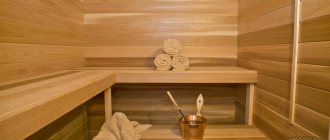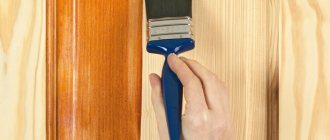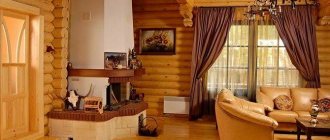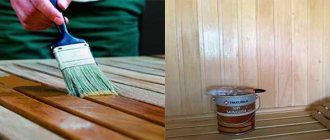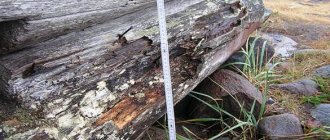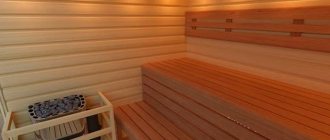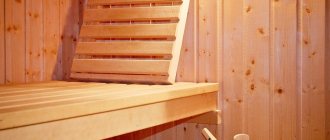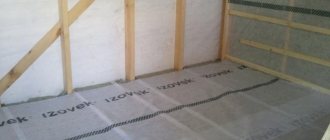Kinds
Today in construction stores you can find the following types of stains:
- water based;
- oil based;
- wax and acrylic;
- alcohol
Water
This is the type of stain that is used most often. This impregnation is available either in the form of a powder, which must be diluted with water, or in a ready-to-use form.
Aqueous solutions are characterized by a wide palette of shades, but shades of red still predominate (from the darkest, most saturated to light). The surface treated with this impregnation is resistant to abrasion. In addition, water impregnations are the most environmentally friendly.
However, water-based stains also have some disadvantages: they are mainly suitable for indoor use; promote swelling of wood making it more susceptible to moisture. To avoid excessive saturation of the wood with liquid, it is recommended to coat the surface with varnish before staining with water stains.
Oily
Using oil-based stains, you can highlight the wood grain well. The palette is extensive and allows you to choose the most suitable color for the interior.
Oil solutions are an excellent means of protecting wood from rotting. They apply easily, dry quickly and do not lift wood fibers. This product does not fill the wood with moisture and lies evenly on the surface. Another advantage is that the surface coated with oil stain does not fade when exposed to sunlight.
Among the disadvantages of oil-based stains, it is worth highlighting their low toxicity and long drying time compared to water stains.
Alcohol
Just like water-based types of stains, alcohol stains are produced either in finished form or in powder form for dilution in denatured alcohol. This product dries quite quickly. For this reason, working with an alcohol solution is quite difficult; it requires experience and certain skills.
Due to the speed of drying, the product is often used for exterior decoration. Treating wood with alcohol stain protects against moisture and ultraviolet radiation.
The main disadvantage of alcohol stains is the pungent odor. When working with the material indoors, it is necessary to ensure effective ventilation.
Acrylic and wax stains
Acrylic (or nitro stain) and wax were developed not so long ago, but are in demand among modern owners of houses and apartments making renovations. These are two completely different types of stains, but their properties are very similar.
First of all, it is worth highlighting the excellent protection against moisture when treating wood with such a stain. This is explained by the fact that when the product is applied to the surface, a thin film is formed. Also, when choosing a wax or nitro stain, you can be sure of the uniformity of the shade of the treated area. The structure of the tree becomes clearly defined.
The disadvantages of these types are: the inability of wood to “breathe” and the difficulty of working with the material due to its rapid drying.
Advantages and disadvantages
Due to its composition, water-soluble stain has a number of advantages over other types of tinting mixtures.
Let's highlight the main advantages:
- low price;
- no odor;
- environmental friendliness;
- ease of application.
Water-soluble mixtures are not the most functional type of stain.
- They take a long time to dry (fifteen hours).
- After processing and drying, lint may rise on the surface of the material. In this case, the wood must be sanded.
- Water stain applied in large quantities to a product can cause cracks to appear on the surface after drying.
Modern manufacturers of building materials also produce universal tinting mixtures, which can be classified as a type of water stain. Water, alcohol or acetone can be used as a diluent for universal compounds. The advantage of making an alcohol or acetone solution from a universal mixture is that it will dry faster.
Features of the composition for painting
Whether you need to repair old doors or give new ones a different look, choosing the right paint product is very important. The quality and service life of a wooden door depends on it. Let's look at the most common means.
Varnishes – colored, glossy or matte. Their main property is that the structure of the wood will definitely be visible under the layer of substance. If you have completely restored the door, then varnishing is unlikely to be suitable, since all the defects and subtleties of processing will be visible. There are several varnish options:
- oil based;
- alcohol varnish;
- polyurethane;
- solvent-based nitrovarnish.
The latter type is not suitable for use on wood: the composition of this varnish has a bad effect on wood. But polyurethane varnish is durable and resistant to mechanical damage, so it is perfect for our task, although it is quite expensive.
The choice of varnish or paint depends on the type of door and its location in the room
If painting with varnish is not suitable for you, turn to paints. Their choice on the modern market is huge both in color and composition, and it will not be difficult for you to give the door any look. Paints can be matte, glossy or emphasizing the wood structure
The main thing is to pay attention to what base the product is made of - oil or alcohol. Nitro paint is also suitable
There are also oils containing wax intended for painting wooden surfaces. This product can be transparent or colored; it will give the wood a soft silky feel. The disadvantage of this material is its high cost.
Compositions for different types of doors
When choosing a paint product, pay attention to the condition of the door leaf. As already mentioned, for an old door that had to be restored, a varnish coating under which the entire surface is visible is absolutely not suitable
In this case, it is better to use paint. The varnish will look good on the new door.
The modern market offers a large selection of paints and varnishes for wooden doors
There are 2 types of paints and varnishes most often used in such work.
- Acrylic compositions on a water-dispersion basis. They are easy to apply and adhere well, as if covering the surface with a thin layer of plastic. There is no pungent odor when drying.
- Alkyd paints and solvent-based varnishes. When painting, they penetrate deep into the wood structure and dry quickly. They withstand temperature fluctuations and have a water-repellent effect. The disadvantages include a strong odor when drying.
Taking these points into account, we can conclude that acrylic compositions are well suited for interior doors and dry rooms. Alkyd paints are best used on entrance doors or in damp rooms
If you plan to paint the door one color, then the choice of coloring material will be based on the above criteria
But if you have a door leaf with a design, take into account the following:
- matching the color of the floor, wall cladding, furniture;
- antique decor or a certain style - high-tech, country, etc.;
- contrast of individual parts (relevant for paneled models);
- wood structure;
- applied drawing. This diagram will help you choose the type of wood by color
Please note: paints must be applied to a completely dry surface. Otherwise, the paint layer on damp wood will begin to peel and flake off.
Selection and technique of applying varnish to wooden doors
Each surface has its own characteristics and risks of damage. To protect the tree and preserve its beauty, you need to carefully choose the composition of the mixture covering it.
The coating may have the following properties:
They differ according to the type of application:
The first thing that interests any person is what visual effect the stain will give, and they start from this when choosing the composition.
Painting wood with stain is used not only as a decorative coating; sometimes tinting hides the mistakes of previous experiments or helps to achieve a uniform color for a product made of porous wood. For tinting, powder stains are used, mixing them with a solution to which pigment is added.
If you are a follower of ancient technologies, use organic dyes; they retain color for centuries. Their color range is more sparse, but if you have a recipe, you can create the same shade decades later.
Using plant ingredients, you can achieve the following shades:
The powder stain is diluted with a decoction and applied as if diluted with water.
This category includes all types of stains, without additives. True, they set off the color of the boards a little. This is due to the type of wood - on dense wood the natural color will remain, but on a porous structure it will become several tones darker.
There are two ways to get this effect. Purchasing a ready-made composition with increased penetration into deep layers or applying a regular stain to a sanded surface and then removing it in convex areas. To enhance the contrast, go along the grain of the wood with a wire brush, then the softer areas will become deeper and darker.
They are used to obtain “Arctic oak”, “bleached oak” and other options with bleaching. For work, purchase water-based stain with white pigment, oil stain and wax. The first layer is applied for bleaching, and the second is a mixture of stain with the addition of melted wax. Excess is removed with a rag. The oil is absorbed into the veins, highlighting the wood structure.
Not all solvents are universal; some are not suitable for children, but they are indispensable when processing parquet. Before purchasing the composition, decide where it will be used.
Which breeding basis is right for you:
It is better to purchase several types than to spoil the product in pursuit of savings.
Stain or, as it is also called, stain is a finishing coating for wood, which, without painting, favorably emphasizes its structure. It consists of a pigment and a base, which can be water, alcohol, or oil. Recently, water-based stains based on acrylic resins have become very popular. In addition to being decorative, they have the properties of a good antiseptic.
Another type of stain is wax. The thin film of wax that forms when covering the surface with stain gives not only the decorative effect of natural wood, but also reliably protects it from water.
When choosing a stain, you must be guided by the following criteria:
To change the interior, you don't have to buy something new. One possible option is to renew wooden doors by painting or varnishing. This updated model will harmoniously fit into a rustic, modern or other style. But in order for the result to please its owners, you need to know exactly how to varnish an old wooden door, and what measures need to be taken for this.
Before you paint a wooden door with stain and varnish, you need to select the material. On the market you can find many types of products that differ in their basis:
To renew the varnish coating, you must first carry out preparation. To do this, remove the old paint layer using one of the following methods:
The future appearance of the canvas directly depends on the quality of the prepared surface. Preparation of the canvas includes the following activities:
First you need to mix the product in an open jar with calm movements. Then pour into the tray. To renew the surface, use brushes or rollers. Apply the product to the canvas using smooth and quick movements.
A narrow brush is used to cover the paneled part. To update the frame and trim, you need to paint them in a vertical position. If drips form, you need to use sanding paper.
To paint a piece of wood, you need to remove the fittings from it so that the impregnation can get into all hidden areas of the structure. If this is not done, rot may form or a bark beetle may infest.
In order to renew the surface of wood, you can use the following methods:
How can I remove stain?
Since stains have the property of deep penetration of the dyes in their composition (often these are natural materials such as manganese, tea, nuts, etc.), it is quite difficult to remove it from surfaces.
If we talk about aqueous solutions, then from the name it is clear that they can be washed with water. But it is worth noting that only the top layer can be washed off. Dyes that have penetrated into the surface texture are quite difficult to remove.
If the skin of your hands gets dirty during work, then you can clean it by following simple advice: you just need to wash something by hand (the same clothes, for example, also stained with stain).
It will not be possible to completely remove stains from clothing. But its condition can be improved by using oxygen bleaches. To do this, apply bleach mixed with water to a pasty consistency onto the stain and leave for at least 20 minutes. After that, wash in the washing machine.
If stain gets on linoleum, stains can be removed with acetone or white spirit. However, when working with them you need to be careful and not overuse, so as not to spoil the color of the linoleum even more.
Domestos is also a fairly effective remedy for removing stains from wood stains.
What is wood stain updated: December 27, 2017 by: RR
A material such as wood has always been in demand, since it is a natural material and no newfangled plastics can compete with it in the ability to create an atmosphere of comfort and warmth in a room. But, like any other material, wooden products require protection and care.
For these purposes, special stains and varnishes are used. Treating wood with such means not only protects it from excessive exposure to light, moisture, scratches, and dirt, but also gives it nobility and sophistication.
To better protect the wood flooring and extend its service life, it is recommended to treat it with stain. This impregnation penetrates deeply into the pores of the wood and enters into a chemical reaction with tannins located in the growth rings, giving the wood a light- and water-resistant color.
In addition, stain protects the wood
from borer beetles, mold fungi and other infections and pests. Modern liquid stains come in the following types:
- oil;
- alcohol;
- aquatic.
Let us consider their characteristic properties in more detail.
Water stain
This impregnation comes in two types: in the form of ready-made solutions that can be used immediately, and in powder form. A solution should be prepared from it. Water stain does not require drying oil
, white spirit and other solvents.
However, it has one significant drawback: when the impregnation penetrates into the wood, it lifts its fibers
, as a result of which the tree remains unprotected from excess moisture.
But, on the other hand, with the help of such wood processing, its structure is emphasized and highlighted. Therefore, today this type of stain is considered the most common.
Alcohol stain
This impregnation is a solution of aniline dye in ethyl alcohol. It is used for decorative and antiseptic painting.
wood products. With the help of alcohol stain, pile lifting is reduced and wood swelling does not occur.
Using this type of stain, it is quite difficult to achieve uniform coloring, because the composition dries very quickly and stains can form
. This impregnation is best suited for tinting small products, but it will not be suitable for painting parquet.
Oil stain
This impregnation is a dye dissolved in flax oil. It is the most convenient to work with and can be applied in different ways. Oil stain does not lift fibers and is evenly distributed over the entire wooden surface. Products processed in this way can always be easily repainted and restored.
.
Making your own stain
There are a large number of folk recipes for making stain at home. Various shades of brown can be obtained by preparing a solution of ordinary potassium permanganate. It is necessary to experiment a little to achieve the desired result, selecting the concentration of the solution. The surface stained with potassium permanganate must be protected from fading, for example, with varnish.
Another simple way to stain wood is to brew strong tea. It will give the wood a rich brown tint. You can also kill a tree with strong brewed coffee. The natural brown color comes from wood treated with a rich decoction of walnut shells, crushed to a powder.
A decoction of oak bark will give the wood a black tint. The golden color is obtained by treating wood with a decoction of buckthorn fruits. A red-brown tint can be obtained by treating a wooden surface with a concentrated decoction of onion peels.
Application methods
There are four main ways to apply stain:
- Rubbing painting. The composition is applied to the surface, after which it is rubbed over the entire area. Recommended for use when processing porous wood species.
- Spraying. When staining wood by spraying, a manual or automatic sprayer is used as a tool for applying stain.
- Processing with a foam roller. This method avoids the formation of streaks and helps to distribute the mixture evenly over the entire surface.
- Processing wood with a paint brush. The method allows you to obtain a deeper and richer color of wood, but is not suitable for all types of impregnation.
Next, we will consider in detail how to stain wood. To obtain a high-quality and good coating, you must follow the basic rules for treating surfaces with stain:
- Before painting a surface with stain, it is necessary to remove old coatings from it, and then degrease it better.
- The surface made of coniferous species (for example, pine) must be deresined.
- It is necessary to paint wood with stain and remove excess only in the direction of the wood structure.
- It is recommended to cover the surface with 2-3 layers, while for the first layer a small volume of the mixture should be used.
- After the first layer has dried, the surface must be sanded and the raised lint removed, and then, if necessary, apply subsequent layers (each subsequent layer is applied only after the previous one has completely dried).
The approximate drying time for oil-based impregnations is about three days, and for water-based and solvent impregnations - 2-3 hours (depending on how many layers were applied). It is recommended to divide large areas of the surface to be treated into small areas and paint them in stages. To avoid the possibility of defects forming on the surface, the composition must be diluted. A solvent is used for this.
Plywood stains perform a purely decorative function. Therefore, if you are in doubt about whether to choose stain or varnish, it is recommended to use them in combination. Before covering the surface of the plywood, it must be moistened, and it is recommended to heat the mixture itself.
After covering the wood with stain, it should be treated with varnish (layers should be very thin to avoid the possibility of smudges). The tool you can use is a brush, roller or sponge. Wood varnish will enhance the protective properties of the impregnation. By following these recommendations, you can easily stain wood at home.
How to prepare wood for processing
Treating wood with stain is not such a simple process as it may seem to an ignorant person. To achieve the desired result, it is necessary to take into account some of the subtleties and nuances of this procedure, and also perform all stages of staining in order.
- First you need to choose a color, a suitable composition of the solution and tools for applying it. For quick-drying compounds, you need to prepare a spray gun or other sprayer. You can work with oil, water or acrylic stains with a brush, sponges, or swabs. It all depends on the size of the surface to be finished and the expected effect.
- Preparing a wooden product for painting involves drying the new surface or cleaning the old surface from the previous finish to the body of the wood. The dry product must be carefully treated with sandpaper or a grinding machine. To avoid the appearance of new defects, movements should be carried out along the fibers. Scratches, dents, and chips on an untreated surface may be inconspicuous, but after covering with wood stain they appear quite noticeably.
- By grinding the surface being treated is brought to a completely smooth state. Then the dust and removed fibers are removed. To do this, you can use a vacuum cleaner or a soft cloth.
- The next stage is degreasing, most often performed with white spirit.
- Before applying the base composition, especially water stain, the product must be moistened with clean water. And sand again.
Some nuances occur when preparing coniferous wood products for working with stains, especially those with high resin content. The fact is that after applying the stain, resinous areas can appear through the coating in ugly spots. It is best to first rid such wood of such manifestations. To do this, use one of the compositions:
- an aqueous solution of acetone, for this purpose mix 750 g of water and 250 g of acetone;
- a soda mixture consisting of one liter of warm water, 60g of soda ash and 50g of potash (potassium carbonate).
To get rid of the resin completely, the treatment must be performed several times. Then rinse the product thoroughly with soap and then with clean water. Dry and then carry out traditional preparation for staining.
Selection of materials
Varnishing wood requires the use of high-quality materials and tools. Depending on the purpose of the wooden product and the conditions of its operation, it is necessary to use varnishes that have suitable characteristics.
There are several types of varnishing material:
- Oil varnishes are made on the basis of synthetic or natural oils, to which special components are added that increase the strength of the coating. Most often, oil varnishes are used indoors to treat walls and floors. The finished coating is transparent, but has a yellowish tint;
- alcohol formulations are made by dissolving natural or synthetic resins in alcohol. Alcohol varnishes create a thin coating that is unable to provide high-quality mechanical protection for wood, but at the same time they make its top layer more moisture resistant. Very often such products are used for priming wooden surfaces;
- Nitrocellulose products are prepared by dissolving nitrocellulose in organic solvents. Special additives are added to the composition to increase the strength of the varnish coating. Nitrocellulose varnishes are applied, usually in several layers;
- acrylic varnishes are made on the basis of polymer acrylic resins. They can be used to create not only transparent, but also painted surfaces. These materials are very durable and environmentally friendly, but they can only be used indoors;
- alkyd varnish materials are made from synthetic resins based on inorganic solvents. The surfaces obtained using these varnishes are highly durable and resistant to moisture. All this makes it possible to use such varnishes to cover the facades of buildings and wooden elements located on the street;
- polyurethane compositions based on polymers make it possible to obtain a thin coating that is resistant to mechanical stress. Very often, such varnishes are used for processing musical instruments.
Surfaces located outdoors or indoors can be varnished. Modern means make it possible to protect even wood submerged in water. If there is no varnish, then it is replaced with drying oil or wax mastic, after which the wooden surface becomes slightly velvety to the touch.
Selecting a pre-treatment agent
1. Remove the old coating, if present, by sanding, which will not only clean the surface, but also level it.
2. Degrease the wood. Grease stains must be wiped with a sponge soaked in white spirit or gasoline.
3. Deresin conifers. The resin found in wood can cause stains and poor stain absorption. Thus, it must be treated with a special solution.
There are several ways to prepare a solution for degumming.
1. 50 g of potassium carbonate must be mixed with 60 g of soda ash and dissolved in a liter of water, the temperature of which is 60 degrees.
2. 50 g of caustic soda is dissolved in one liter of warm water. The result is a 5% soda solution, which should be used to treat the surface.
3. Add 250 g of acetone to 0.75 liters of purified water.
The finished mixture should be applied liberally to the surface of the wood. After half an hour, the wood should be wiped with a cotton cloth and rinsed with warm water.
The technology for painting wooden products assumes that the work will be carried out in several stages:
- Selection and preparation of tools.
- Preparation and processing of the base.
- Painting.
- Additional processing (if necessary).
All processes are carried out carefully. It should be remembered that wood is a capricious material and is easily deformed.
Stages of preparing and painting a wooden product: sanding, dust removal, degreasing, priming and painting
Tool
For painting you may need:
- Spray gun and compressor. This system allows you to process large areas in a short period of time. At home, an alternative can be a mechanical sprayer.
- Brush. Necessary for painting hard-to-reach places, as well as for interior painting.
- Roller. It is better to choose a fur coat with medium-length pile.
- Convenient container. If you plan to paint with hand tools.
- Rags. To quickly correct errors.
Necessary tools for painting
Everything necessary is prepared in advance.
Preparation has a special role to play. If you follow all the procedures correctly, then no problems will arise in the future.
Process diagram:
- If surfaces have previously been treated, they are thoroughly cleaned of the existing coating. For this purpose, a mechanical, chemical or thermal method is used. The main thing is that the base must be completely clean.
- To properly prepare a work site, you need to assess its condition. If the previous coating quickly deteriorated, the reasons for this are first identified and eliminated. Thus, the wooden facade is influenced by water that flows from the roof. In the absence of a drainage system, the impact will be destructive.
- Grinding in progress. This procedure is necessary for both new and old grounds. The resulting dust is removed.
- Traces of resin are cleaned off, areas are washed with white spirit.
- The surface is treated with protective agents. Fire retardants and antiseptics are applied first. Then, if necessary, the areas most susceptible to destruction are coated with oils. The impregnation is applied in several layers with a roller and brush.
- Further work is carried out after complete drying. Existing cracks and defects are covered with special putty. After it has set, the areas are sanded.
- Primer is applied. If required, it is necessary to treat the surface with drying oil or stain.
The coating is left to dry thoroughly; it is unacceptable to act on a wet base.
Applying paint
Painting wooden surfaces is carried out as follows:
- The process starts from the corner when working with walls, facades, floors and ceilings and from one of the ends when designing objects, furniture, and individual wooden elements.
- Oil and alkyd paints are applied using vertical strokes. Next, the composition is rubbed well, after which the movements become horizontal. Acrylic paints can be immediately laid horizontally (along the grain of the wood).
- The first layer is considered the base layer. To do this, the solution can be diluted slightly to ensure better styling. The second layer (if painting is done in three layers) creates a reliable base. After this, in places of defects, the surface is ground with fine abrasive. The last coating is applied most carefully.
- Spraying tools make it much easier to work over large areas. But when using them, the movements should be uniform and at the same distance from the base.
Rules for applying paint with a spray gun
If required, after drying, a layer of varnish is placed on top. It not only protects the paint, but also adds shine.
Varnishing is carried out after preparing the surface. If a colorless composition is used, then the base can be treated with stain to give the desired shade.
The varnishing process itself looks like this:
- The first layer is applied evenly. Drips should be avoided.
- To achieve a better effect, grinding is carried out.
It allows you to remove invisible imperfections. On a note! Many craftsmen advise sanding after laying the second layer. But this depends on the viscosity of the varnish: with a thinner consistency, the first coating cannot be sanded. - The second layer is laid. The main thing is to distribute the mixture evenly to avoid its accumulation in some places.
- The third layer completes the work.
When applying all coatings, wait until the previous one has completely dried. If necessary, the product is polished after a few days.
Photo of stain
Stains are applied to the surface of unfinished wood floors to change the color of the wood. Colored stains can also be applied to previously stained and coated floors to create a layered effect. Buy a water-based stain that is made for easy application and won't leave marks or streaks. If the manufacturer recommends, use a wood filler conditioner/primer before staining.
Filler primer conditioners will help prevent streaking and warping due to fiber swelling when water-based stains are used. There are a wide variety of stains available in natural wood tones. You can also choose a colored stain, such as green for a rustic decoration, or white for a modern look. You can also stain wood to create an overlay effect using diluted latex paint. The overlay solution will be significantly lighter in color than the original paint color. To make this solution, use a recipe and experiment with small amounts of paint until you achieve the color you want. Before staining the entire floor, apply the stain or blending solution to an inconspicuous area, such as a closet or closet, to evaluate the application method and the resulting color. Protect your stained floor with three coats of a clear matte, semi-matte or gloss finish. Choose a finish that will not leave brush marks.
Tools and materials
- Latex gloves
- Synthetic brush, sponge applicator or lint-free rag - for applying stain
- Filling conditioner-primer for wooden products (at the buyer’s request)
- Wiping cloth
- Lint-free cotton cloth - for wiping off stain
- Water-based stain or latex paint in the desired color
- High gloss and semi-matt clear coat, such as acrylic or polyurethane, to protect stained floors
- Sponge applicator or paint pad and extension handle - for applying clear
- finishing coating
- Electric sander, fine-grit sandpaper
Sand the floor surface using fine sandpaper, sanding in the direction of the grain of the wood. Use a vacuum cleaner to remove dust resulting from stripping, then wipe the floor with a wiping cloth.
Wear rubber gloves when working with stains. the stain thoroughly
or solution to create an overlay effect.
Using a synthetic brush or sponge applicator, apply the stain or solution to the floor
. At any given time, work is performed on small areas of the floor. Keep the edge of the brush or applicator wet, and try not to overlap brush strokes.
Immediately or after waiting a certain time set by the manufacturer, wipe off excess stain with a dry, lint-free cloth: first across the wood grain, and then along. Continue applying (and wiping off) the stain until the entire floor is covered. Let the stain dry. Lightly sand the floor with fine sandpaper, then remove any sanding dust with a wiping cloth. For deeper color, apply a second coat of stain and let it dry completely. Using a sponge or paint pad applicator on an extension handle, apply a high-gloss clear coat to the stained floor. Let the coating dry. Lightly sand the floor with fine sandpaper, then remove any sanding dust with a wiping cloth. Apply two coats of semi-gloss clear topcoat.
SOLUTION FOR OVERLAYING EFFECT ON THE FLOOR
Mix the following ingredients: 1 part latex paint 4 parts water
Dark wood tones are good for ordinary rooms. Applying white grout over previously applied dark stain softens the formal look.
For modern rooms, pale, neutral-colored stains are often used. Overlaying blue can make a pale floor stand out more.
Moderate, warm wood tones have a casual appearance. Layering white over moderate wood tones gives an antique look.
Dealing with defects - what to do if the stain is applied incorrectly
Quite often, after applying stain, various defects form on the surface. They may not appear immediately, but only after drying. The sooner measures are taken to eliminate them, the greater the chance of complete restoration of the applied layer. Most often you have to work with the following defects:
- Streaks. If the resulting drip is noticed at the time of applying the stain, it must be impregnated with varnish, which will dissolve the bottom layer. Then the area should be wiped with a clean rag and treated with the mixture again. The already dried streak is first softened with a solvent, then removed with a knife, plane, or sandpaper.
- Stains. First of all, it is necessary to determine the cause of their occurrence. The problem may be poor quality wood that has black areas that unevenly absorb the stain. In the case of external solid wood, a plane will help; all the veneer will need to be removed from the plywood. It is better to re-coat the area with a thick wax mixture.
General information about stains
Stain is a liquid composition, often dark in color, which can give wood various translucent shades, which allows you to radically change the appearance of the product, as well as protect the material from external destructive influences. Therefore, this means of processing wooden parts can be called multifunctional.
Stain can give wood different shades, radically changing the appearance of products
So, with the help of similar protective and decorative compositions, the following operations can be performed to change the appearance and characteristics of wood:
- It becomes possible to tint while preserving the textured pattern of the wood.
- A special-purpose stain is capable of bleaching wood - this is a necessary process during restoration work, when changing the color to a lighter shade, or when preparing the surface for applying varnish.
- Imitation of shades of elite expensive wood species is widely practiced.
- The stain has the property of deep penetration into the structure of the material, and its antiseptic qualities of the composition protect the wood from putrefactive processes and the destructive effects of wood-boring insects.
- The action of the stain is accompanied by strengthening the structure of the wood.
- An important quality is to give the material water-repellent properties.
- Any type of stain significantly extends the life of wooden products.
Using different shades of stain allows you to add visual volume to the wood grain.
- The stain is suitable for both interior and exterior work.
- The quite affordable cost of the material is also attractive - the price of stain is two, two and a half times lower than paint and varnish compositions similar in the created effect.
Different types of stain interact with wood differently, depending on the basis of their manufacture. Some of them penetrate deep into its structure, others create a protective film on the surface.
Finishing wooden surfaces with stain: tips from TBM-Market specialists
To make the result pleasing, before starting finishing work you need to remember the simple rules of wood processing:
- To increase the depth of penetration into wood and improve adhesion to the surface, the composition should be slightly heated to a temperature of 36-38°C.
- The stain can be applied in different ways: rub in in a circular motion using a swab and longitudinally using a roller and brush.
- Wiping off excess must be done only along the fibers.
- To avoid blots and drips, do not dip the brush or swab into the solution too much.
- Do not apply a second layer of composition on the first one that has not dried.
- The ends and sections of wood that actively absorb the composition must be subjected to more intensive processing.
- Vertical surfaces of doors, panels, and walls should be coated starting from the bottom to prevent stains from being absorbed into unpainted wood.
- The procedure for applying layers can be repeated several times until the desired tone is achieved.
Types of stains
Basically, stains are divided into types depending on the solvent used in its manufacture. So, they distinguish:
- Water stains. From the name of this material it is clear that its basis is water. They have the heaviest weight on the market. A wide range of colors of water-based stains allows you to give wood almost any texture and shade. Such dyes are sold either in finished form or in powder form, which you can dilute yourself with warm water. The most important advantage of water-based stains is the absence of odor, which makes it possible to work with wood in residential areas. However, when applying a water-based stain, the wood pile rises, which requires sanding its surface after drying. With drying, things are even more complicated. Water-soluble stain can take more than 14 hours to dry, which significantly slows down the work process. A separate group of such materials are acrylic stains. They are more resistant to moisture and sunlight, which increases the time between repairs. The basis of these materials are acrylic resins. When used, acrylic stains do not raise the wood pile. However, their cost is much higher than water ones.
- Alcohol stains. These solutions are prepared based on denatured alcohol. The main feature of this stain is that it dries quite quickly. The process of complete drying of the surface takes from 15 to 30 minutes, so you need to work with it carefully and quickly so that no streaks remain. When working with alcohol stains, you should not leave them open; the alcohol will quickly evaporate and the material will become unusable. The most optimal way to apply the material to the surface of wood is spraying with a spray gun.
- Nitromordants. Manufactured from various solvents. The properties of nitro stains are similar to alcohol stains: they dry quickly and penetrate deep into the structure of the wood.
- Oil stains. Prepared on the basis of oil. In the vast majority of cases, linseed oil is used to impregnate wood with your own hands. When such a stain is applied to the surface, the wood fibers remain in their normal state and do not rise. One of the most important advantages of oil stains is their resistance to ultraviolet radiation. The coloring pigments in this material are not subject to destruction by sunlight, due to which the surface retains its original color for a long time. Oil stains can be applied either with a spray gun or with a brush. Drying time for the treated surface is approximately 3-4 hours.
How to varnish wood after staining
After the wooden surface has been treated with stain, it is coated with varnish in several layers, using a paint brush or roller . If you need to treat hard-to-reach places, use a foam sponge.
Recently, spray varnish in cans has been gaining popularity, the application of which does not require any tools. But such varnish is consumed several times more than traditional one.
The technique of applying varnish is similar to the technique of treating wood with stain. A wooden surface should be painted with varnish in 2-3 layers , and they should be very thin, otherwise smudges will be very noticeable on such a coating.
Thus, in order to treat a wooden surface with stain and varnish it, you do not need any special knowledge. Anyone can do this . The main thing is to have patience and perseverance. Only in this case will the tree in the house please the eye with its appearance.
To finish wooden doors, you can use various compositions that have their own specifics. Let's consider the main options for finishing interior wooden doors. Operating conditions, temperature and humidity parameters will tell you which finishing composition you should choose.
Oil paints are often used indoors and do not require special care after application. It is only necessary to periodically wash away dirt and fingerprints from the surface of the door treated with an oil composition. Indoors, you can apply one layer to the door, but if shade and depth are important to you, then you can use two layers, which will protect the wood from external influences for a long time.
Stain, how to apply it and how deep does it penetrate? How to - Wood Stain
This episode shows how I prepare the workpiece and apply the stain. Also a little check on that.
Acrylic compositions have a particular advantage over oil paints. They are less dangerous for the environment, do not have a pungent odor, and are not flammable. Is it possible to apply acrylic varnish over gouache?
Painting will not take much time, the paint dries quickly: within a day the doors are ready for use. If work is carried out in a room with a high level of humidity, this may cause the door to dry out for a long time. If paint is applied to an old layer or to wood that has been treated, the acrylic layer becomes elastic and prevents cracking and peeling.
Stain or impregnation differs from the usual coloring composition in that it does not remain on the surface of the wood when applying the first layer, but penetrates into the structure of the material. But stain can perfectly highlight the pattern and texture of wood; with the help of stain, you can emphasize the natural shade of wood, fill it with depth, or change the existing natural shade with another, more saturated one. Stain can even out the color of the door leaf, making it more homogeneous and uniform. Water- and oil-based impregnations are immediately ready for use.
You can purchase stains in powder form. To dilute the powder we use methyl alcohol. But usually, stain itself cannot provide reliable protection for wood, so you will have to apply varnish or polish over the stain.
Protective stains differ from conventional impregnations in that they allow the material to breathe. The finish is resistant to moisture, it does not peel off or crack. There are transparent protective stains that can highlight the natural beauty of wood, becoming an invisible protector of the material. When applying stain, brushes are always used.
Before using the composition, you must read the manufacturer's recommendations, because some manufacturers recommend applying stain in one layer, and in some cases two or three layers may be needed. Water-based stains will dry faster than compounds that were diluted with white spirit.
The transparent layer of varnish also protects the wood from external influences. Thanks to polyurethane resins in the varnish, the surface acquires properties such as heat resistance, resistance to damage and scratches, and water resistance. Varnish gives the door a different look depending on the type of composition.
Today you can find varnishes that give the wood a certain shade, so you can highlight the faded color of the wood, filling it with a specific tone. It is advisable to coat colored compositions with transparent varnish. This is explained by the fact that tint compounds do not penetrate the wood and over time can wear off and lose their shine or shade. Therefore, transparent protection will preserve the appearance of the door for a long time.
Do not be intimidated when treating doors with acrylic quick-drying varnishes. Usually the surface immediately has a whitish tint, but after drying it disappears and the varnish becomes transparent.
Color palette
There are different colors of wood stain, and it is very difficult to answer the question of how to choose the most suitable one. This material allows you to add almost any shade to wood products. For example, black stain is very popular, which allows you to give the surface the appearance of a black mirror. It is recommended to polish the base before applying it.
Gray stain makes it possible to avoid highlighting the treated product from the overall interior. It is worth painting with it only if the walls and textiles in the interior are bright. Gray can cause depression, and products in this color will look too faded and gray.
Psychologists advise choosing a green stain (colored stain), since this shade evokes positive emotions. Green color is suitable for surface treatment of various interior items. Blue stain allows you to get a very expressive look to the finished product. Choose it to combine with yellow and white tones.
How to paint doors coated with varnish or paint
Over time, any doors wear out and become unsightly. The moment comes when they need to be restored. It would seem that this is not a difficult task, and anyone can do it
But not many people know that before finishing the doors, you should pay attention to the coating with which they were previously painted. If you are not going to completely remove it, then you should take care of the compatibility of coloring agents, those that were previously applied and new ones
In this article we will tell you how to paint doors coated with varnish or other paints. We will also figure out which paint is suitable for this or that material from which the door is made.
Deciding on the material from which the doors are made
If the door is quite old or, on the contrary, new and expensive, then in 95% of cases it is made of natural wood. To accurately determine this, just lift the door; if it is heavy, then it is wood. Modern versions of such doors are finished with veneer, while older examples were simply coated with paint or varnish.
If you lifted the door without much effort, it means that there are voids inside it filled with cardboard, so the weight of the door is not significant. But such a door does not have high sound insulation, and therefore its price is much less than that of natural wood. The top of such doors, just like wooden doors, is finished with veneer. Note that the texture of veneer resembles natural wood and is mainly varnished for stability.
Painting a veneer door
It would seem that the new door will not have to be painted, but this is not so. When selling a door, the buyer is often warned that after installing it, additional varnish treatment is required. The fact is that unscrupulous manufacturers, having made doors and instead of covering them with varnish in several layers, they do it only once. Therefore, additional processing is required. How to paint varnished doors, but it’s not at all difficult to do. A clean door must be coated with a layer of varnish, and after it has dried, the entire door leaf should be sanded. Then remove all chips from the surface using a brush or vacuum cleaner and apply a second coat of varnish. After it dries, the door can be used.
An important point in this work is that the door sanding process should be carried out before each painting. Then the surface will be even and smooth, and the doors will become attractive.
How to Paint a Previously Painted Door
Now we will look at a sample of an old door, opened with varnish or painted. In our version, this is a seasoned door with many chips, cracks and scratches. Such a door can be restored by removing it from its hinges or in a vertical position. Use a spatula to remove all paint peelings.
The entire surface of the door is sanded with sandpaper, and special attention is paid to cracks and pits. Using wood putty, all defects and unevenness of the door leaf are treated, but before that, they are impregnated with a special primer
After the putty has dried, the door is again sanded until smooth, all dust is removed, and areas that are not to be painted are sealed with tape. All this work is carried out before painting the doors coated with varnish or paint. After this, you should apply the first layer of paint and paint, and after it dries, the second. This can be done using a brush, roller or spray.
An important point here is the coating with which the doors were previously painted. If it was varnish, then the door should be varnished, and if it was paint, then paint
When choosing paint, pay attention to the compatibility of old and new material. If you decide to open painted doors with varnish, then in this case you should use a product to completely remove paint from the surface of the doors and only after that you can start painting with varnish
Don’t forget about the door frame and trims; they must be painted using the same technology as the door, only they cannot be removed, so all work will need to be carried out directly at the place of their installation. Now you know how to paint doors coated with varnish or paint.
Surface preparation
All cracks on the wooden surface must be carefully puttied and sanded.
The varnish can only be applied to a sanded smooth surface. Regardless of whether the new material needs to be varnished or the old one, it must be carefully examined. All discovered seams, cracks and knots must be processed and eliminated.
Any gaps found between seams and joints must be sealed with special putty. After application, the putty is allowed to dry, and then, to remove possible unevenness, the putty areas are sanded again with fine sandpaper.
It is also necessary to take into account the fact that it is pointless to putty on raw or even under-dried wood, much less treat it with drying oil, stain or varnish.
When drying, the wood becomes deformed, and the applied layer will inevitably be damaged.
Modifications of stains
They are classified depending on what they are made from. They go on sale in the form of ready-made liquids, gels or powders, but the properties of stains depend only on the components and their proportions.
Water fighters
- Such stains come in a wide variety of shades, so you can choose the composition for almost any type of wood and make it the required tint in relation to the interior of a particular room.
- "Environmental Safety". For those who are concerned about the “purity” of the product, water-based stains are the best option. No harmful fumes, regardless of external factors. First of all, temperatures.
- Considering the base, it is clear that it is not difficult to wash off such a stain with water. In some cases, this is relevant if, in the process of working with wood, it is necessary to slightly change the resulting shade.
- Water-based stains are deep penetration agents. This property also has a negative component. During the processing process, the wood is additionally saturated with liquid. What does this mean? Firstly, it becomes more susceptible to moisture absorption. Secondly, shrinkage lasts longer and often initiates curling of the processed workpiece. Therefore, the use of stains from this group requires both experience and accuracy.
- The need to subsequently apply a protective layer to the wood. For example, varnish, which is most often practiced.
Alcohol stains
- The impregnation dries quickly. Some consider this a disadvantage, but the ease of use is obvious. Especially during outdoor work, when the weather is unstable and there is a possibility of precipitation.
- High-quality protection of wood from ultraviolet radiation and dampness.
- Strong specific smell. When organizing work in a room, it is necessary to ensure its effective ventilation. Will it be possible to do this in winter?
- Rapid absorption into the structure of the material. This makes it somewhat more difficult to treat wood with alcohol stains, since due to the uneven application of impregnation there is a risk of stains appearing against the general background. Experts advise using a spray gun, since it is almost impossible to achieve uniform shade of wood manually (with a brush) without proper experience.
Oil stains
Pros:
- Do not fill the wood with moisture.
- Easily change shade by adding dyes.
- The stains of this group are applied to the wood in a thin layer, evenly, so there are no difficulties in working with them.
- Do not fade when exposed to ultraviolet light.
- Application of an additional protective coating (varnish, wax) to the wood is not required.
- Inert to changes in ambient temperature and humidity.
- Certain toxicity.
- Long drying time (depending on application conditions).
Wax and nitro stains (acrylic)
Their characteristics are largely similar.
- After such stains dry, a thin protective film appears on the wood.
- Uniformity of shade over the entire treated area is guaranteed. The presence of stains and bald spots is excluded.
- The structure of the tree stands out especially clearly.
- The difficulty of working with these stains. Mainly due to the quick “setting” of the impregnation. Therefore, any further alterations are no longer possible.
- One of the advantages of wood is lost - the ability to “breathe”. The reason is the film that forms. Not all users note this, but nevertheless. How permeable it is is a big question.
Rustic stains
Quite new drugs. Their main purpose is to emphasize the structure of the material, to achieve several shades in one area
The use of such compositions requires high professionalism, so the author does not focus on them. Only for informing the reader, since it is unlikely that it will be possible to process wood yourself
If, of course, we mean a quality result.
Making an antique effect
An interesting effect of aged boards can be achieved by using, for example, white water stain as the main tone. After drying this layer, apply a layer of gray or black thick wax stain, which will emphasize the texture of the wood. In this way you can combine stains of different colors.
The appearance of worn, erased boards is achieved by applying a water-based stain to the surface as a background. Without letting it dry, you need to wipe off part of the stain in the right places, imitating abrasion. After complete drying, cover the surface of the product with a second layer.
The stained surface of the wood is lightly burned with a gas burner to reveal the texture. Firing can be done only after the stain has dried. Next, the surface is cleaned with a shoe brush.
A beautiful effect with a pronounced wood structure is obtained by applying the first layer of white water-based stain. After drying, an oil stain with the addition of melted wax is applied to the main background.
Not all stains have antiseptic properties and can protect wood from the influence of the external environment, so it is better to varnish the treated wood to extend its service life.
Antique doors highlight the design solutions in the room. To update the interior of the house in this way, an “antique” wooden door is created. Several technologies are used for this:
- Brushing is a simple technique that is used by many craftsmen. The work is done with an iron brush, with which the top layer of wood is removed (until the annual rings appear). But this technique of giving the door an antique look requires a large amount of varnish;
When brushing, the top layer is removed with a metal brush. Patina is a special paint that is often used to create the effect in question. The technology for applying the mixture consists of choosing the desired color and applying 1 main layer, which is subsequently covered with paints or varnishes, but of a lighter shade.
Patching gives the wood the effect of multiple paintings
If you have old doors, then it’s easier to update or restore them a little.

